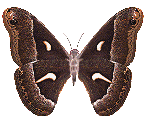Colouration in Animals and Plants
Ed. by S. B. J. Skertchly, 100 pp.
Alabaster, Passmore, and Sons.
London





|
Colouration in Animals and Plants Ed. by S. B. J. Skertchly, 100 pp. |
     |
Alfred Tylor's book "Colouration in Animals and Plants" (1886) was partly influenced by Butler's "Life and Habit" and Romanes' "Mental Evolution." Tylor's book is unfortunately "only a sketch of what its author desired it to be and he never saw the completed manuscript". It was written from the point of view of a typical structuralist, many years before the beginning of modern structuralism represented by Adolf Portmann. Here, colour and colour patterns are seen not merely as the passive result of adaptation via Natural Selection but as an intrinsic expression of the internal "effort" combined with the character of the structure itself. After the author's death, Mrs. Sydney B. J. Skertchly edited the fragments and drew beautiful illustrations, chiefly from nature, and the resulting book was carefully printed by Alabaster, Passmore and Sons. Today, this book is almost unknown among specialists in colouration of animals and plants.
"Colour, then, as expressed in definite tints and patterns, is no accident; for although, as Wallace has well said, "colour is the normal character,"..."

|
|
|
|
|
|
|